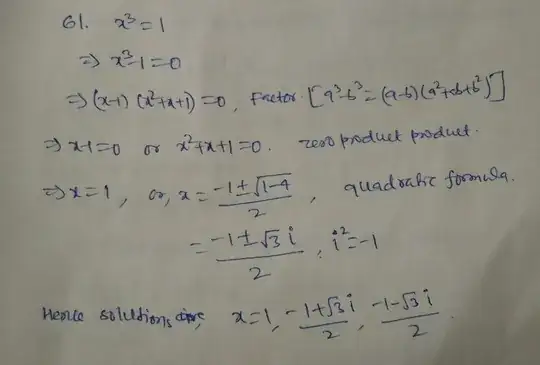If you are working in $\mathbb{R}$, then you can easily find that $x = 1$ is a solution, as you have found.
But what about if we wish to find all soutions, including those in $\mathbb{C}$? How do we know that we haven't lost solutions, or that we have all of them?
By the Fundamental Theorem of Algebra, you know that the equation $x^3 = 1$ (or equivalently, $x^3 - 1 = 0$) has three roots. We already know that $x = 1$ is one of them, so you can use your precalculus knowledge of the factor theorem to factor $x - 1$ out to give $(x - 1)(x^2 + x + 1) = 0$. Solving the remaining quadratic gives the solutions $x = \frac{-1 + \sqrt{3}i}{2}$ and $x = \frac{-1 - \sqrt{3}i}{2}$.
You may also be interested in reading up on roots of unity.
